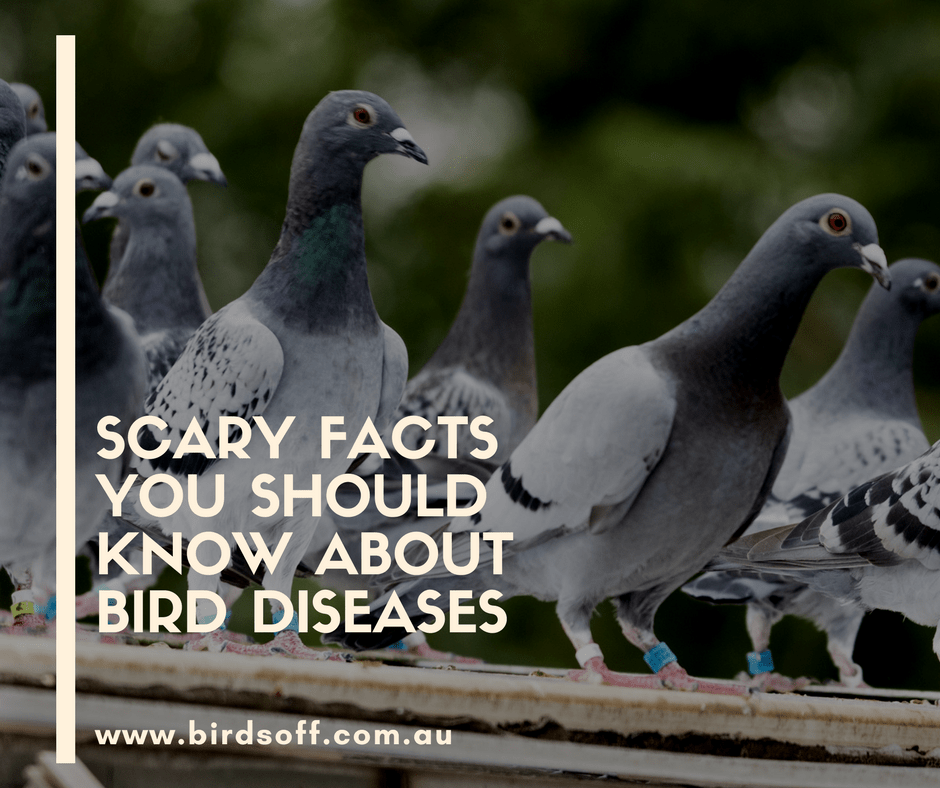
Part of my passion for bird deterrents is to continually research information. The behaviour of different birds and how they impact us humans. I was amazed at just how dangerous bird faeces are and had to share this with you.
When it comes to birds, there may be more than just avian flu to be worried about. It has been suggested that there are over 60 other diseases that birds and their droppings can carry. The problem is especially worrisome in residential areas, as many of them are airborne and can be transferred to humans just by being around droppings.
Histoplasmosis is a respiratory disease that may be fatal. It results from a fungus growing in dried bird droppings.
Candidiasis
Yeast or fungus infection spread by pigeons. The disease affects the skin, the mouth, the respiratory system, the intestines and the urogenital tract.
Cryptococcoal Meningitis
Caused by yeast found in the intestinal tract of pigeons and starlings. The illness often begins as a pulmonary disease and may later affect the central nervous system A reported case in Canada of a young woman who contracted the debilitating disease which attacked her brain and spine causing severe swelling. Left her confined to a hospital bed in a state of delirium for weeks. Sadly the devastating side effect was that she became blind. Doctors were quoted as saying she was lucky to have survived Had it been an elderly person or a young child the disease would have killed them. Since attics, cupolas, ledges, schools, offices, warehouses, mills, barns, park buildings, signs, etc. are typical roosting and nesting sites, the fungus is apt to be found in these areas.
St. Louis Encephalitis
An inflammation of the nervous system, usually causes drowsiness, headache and fever. It may even result in paralysis, coma or death. St. Louis encephalitis occurs in all age groups, but is especially fatal to persons over age 60. The disease is spread by mosquitoes, which have fed on infected house sparrow, pigeons and house finches carrying the Group B virus responsible for St. Louis encephalitis.
Salmonellosis
Often occurs as "food poisoning" and can be traced to pigeons, starlings and sparrows. The disease bacteria are found in bird droppings; dust from droppings can be sucked through ventilators and air conditioners, contaminating food and cooking surfaces in restaurants, homes and food processing plants.
E.coli.
Cattle carry E. coli . If you are worried about Ecoli from under cooked meat you should also be washing your hands whenever you spend time in a pigeon rich environment. When birds peck on cow manure, the E. coli go right through the birds and the bird droppings can land on or in a food or water supply.
Besides being direct carriers of disease, nuisance birds are frequently associated ectoparasites, Bed bugs, chicken mites, yellow meal worms, West Nile Virus to name a few.
The good news is these diseases can be prevented if we take simple steps to protect our living environments. We also need to be aware when we are out of our homes, what environments we are eating in and the level of hygiene in those premises. Sometimes frequenting pigeon rich environments is unavoidable however washing your hands thoroughly is essential.
With extra vigilance on your behalf you can take preventative action to protect your homes and those you love.







